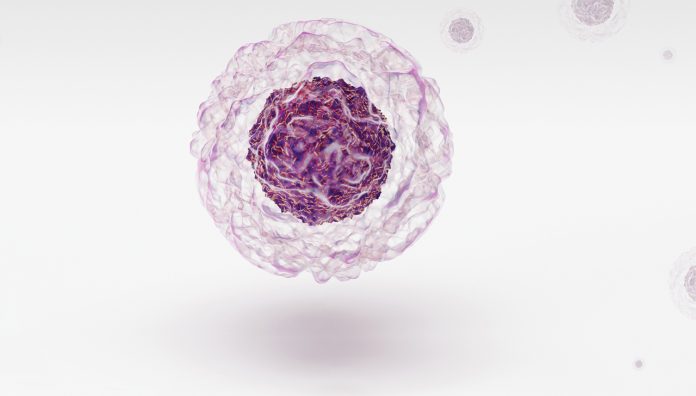Recent research has shed light on a potential new avenue to reduce insulin requirements for people with type 1 diabetes.
An estimated 1.2 million Australians (6%) live with diabetes, not including gestational diabetes. Type 1 diabetes is one of the most common chronic childhood conditions, and accounts for approximately 10% of all diabetes cases. People can be diagnosed with type 1 diabetes at any age, though this most commonly occurs in children and young adults.
Type 1 diabetes is an auto-immune condition whereby the beta cells (found in clusters called islets) in the pancreas are destroyed, reducing the pancreas’ ability to produce insulin.
This means people with type 1 diabetes require an exogenous source of insulin to maintain near normoglycaemic levels. Contrary to what was previously thought, it is now known many people with type 1 diabetes retain some functional beta cells, even many years after diagnosis.
It is also recognised that maintaining the function and preserving the remaining beta cells to produce even a small amount of endogenous insulin produces beneficial outcomes for overall control of blood glucose levels, and preventing complications.
Much interest and research efforts have been invested into improving outcomes for people living with diabetes. While there have been improvements into exogenous insulin preparations, improving insulin delivery and blood glucose monitoring, there is still no therapeutic option for preventing the destruction of beta cells, or preserving the ones which remain.
Transplants to replace the beta cells (islet or pancreas transplants) are fraught with side effects related to the required immunosuppression; and stem-cell approaches still require much more research. Interestingly, this is where verapamil might have a role to play.
A new role
While we commonly associate verapamil with hypertension, and reducing the risk of macrovascular complications is important for people living with diabetes, it certainly is not the first medicine which comes to mind when one thinks of a medicine for type 1 diabetes.
It is commonly known that verapamil works by blocking L-type calcium channels, which block the inward current of calcium into cardiac and arteriolar smooth muscle. What many of us may not know is that aside from the heart, the beta cells of the pancreas also have a lot of L-type calcium channels.
Blockade of the L-type calcium channels reduce intracellular free calcium, which leads to inhibition of TXNIP transcription. TXNIP is a critical regulator of hepatic glucose production. Animal studies in mice with diabetes found elevated expression of TXNIP by beta cells, and that overexpression of TXNIP caused beta cell apoptosis.
By the same token, a deficiency in TXNIP promoted survival of beta cells and prevented diabetes in mouse models.
TABLE 1. Verapamil (oral) dosing information (AMH)
| Condition | Dosing (Adult) |
| Angina | Conventional tablet, initially 80 mg 2 or 3 times daily; maintenance dose, 160 mg 2 or 3 times daily. Controlled release tablet, initially 180–240 mg once daily, increasing if necessary to a maximum of 240 mg twice daily. Give daily doses >240 mg in 2 doses. |
| Supraventricular tachycardia, atrial fibrillation, or atrial flutter | Conventional tablet, initially 40–80 mg 2 or 3 times daily; maintenance dose, 160 mg 2 or 3 times daily. Controlled release tablet, initially 120–240 mg once daily, increasing if necessary to a maximum of 240 mg twice daily. Give daily doses >240 mg in 2 doses. |
| Hypertension | Conventional tablet, initially 80 mg 2 or 3 times daily; maintenance dose, 160 mg 2 or 3 times daily. Controlled release tablet, initially 120–180 mg once daily; usual maintenance dose 240 mg once daily; increase if necessary to a maximum of 240 mg twice daily. Give daily doses >240 mg in 2 doses. |
| Prophylaxis of cluster headache | Use under specialist supervision; initially 240 mg daily; usual range 240–960 mg daily in 1–4 doses depending on formulation. |
| Type 1 diabetes* | Initially 120 mg daily, and if tolerated, increased to a maximum of 360 mg daily. |
*Type 1 diabetes does not have an indication for this condition – dose provided is indicative only.
Gathering data
A recent clinical trial investigated the use of verapamil compared to placebo for preserving pancreas beta-cell function and mass. The study was randomised, double-blinded and included 26 people (18–44 years of age) who met the inclusion criteria, one of which was a diagnosis of type 1 diabetes in the preceding 3 months.
Baseline characteristics were comparable between the groups. In addition to standard insulin therapy, participants received an initial dose of 120 mg verapamil, which was increased to a maximum of 360 mg daily if tolerated, and followed for a total of 12 months.
The primary endpoint investigated endogenous beta cell function, which was measured using stimulated C-peptide area under the curve. This was significantly higher in the verapamil group compared to the placebo at 3 months (p = 0.0270) and 12 months (p = 0.0186).
An analysis of exogenous insulin requirements (a secondary endpoint) also saw positive results with the verapamil group. At baseline, all participants were on 0.26 units insulin / kg / day. By 12 months, insulin requirements of the placebo group had increased by 70%, compared to 27% in the verapamil group (p = 0.0312).
There was also a non-significant trend toward better glycaemic control in the verapamil group (p = 0.083), and fewer hypoglycaemic events, though all participants maintained HbA1c levels between 6–7% (or 42–53 mmol/mol). The authors recognised the limitations with the small sample size and short follow-up period.
Conclusion
Further studies investigating prevention of microvascular and macrovascular complications would also be interesting.
Nevertheless, addition of once-daily verapamil might have a profound impact on improving outcomes for patients living with type 1 diabetes if it is clinically useful for preserving and maintaining beta cell function.
References
- Ovalle F, Grimes T, Xu G, Patel AJ, Grayson TB, Thielen LA, Li P, Shalev A. Verapamil and beta cell function in adults with recent-onset type 1 diabetes. JAMA Oncol. Nat Med. 2018;24(8):1108-1112.
- Poudel RR, Ka e. Verapamil in Diabetes. Indian J Endocrinol Metab. 2017;21(5):788–789.




 Source: Queensland Health Immunisation Program[/caption]
Source: Queensland Health Immunisation Program[/caption]


 Dr Sarah White[/caption]
Dr Sarah White[/caption]








